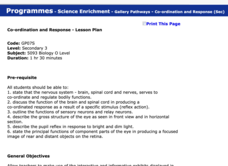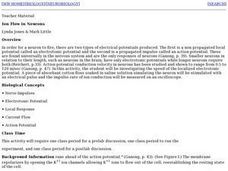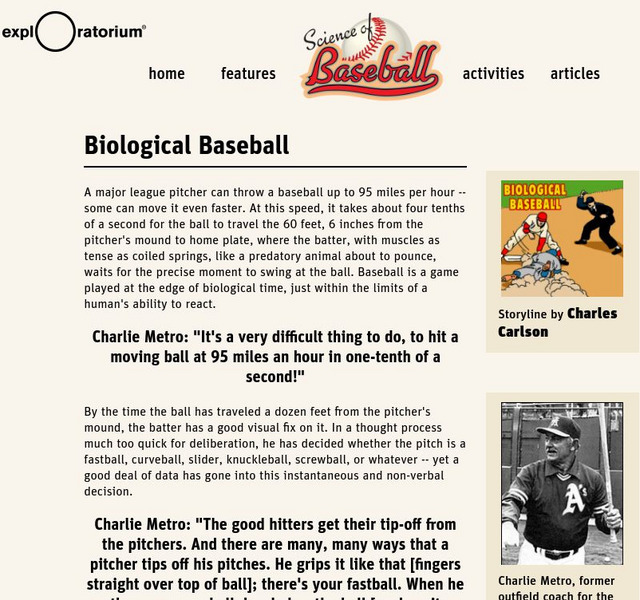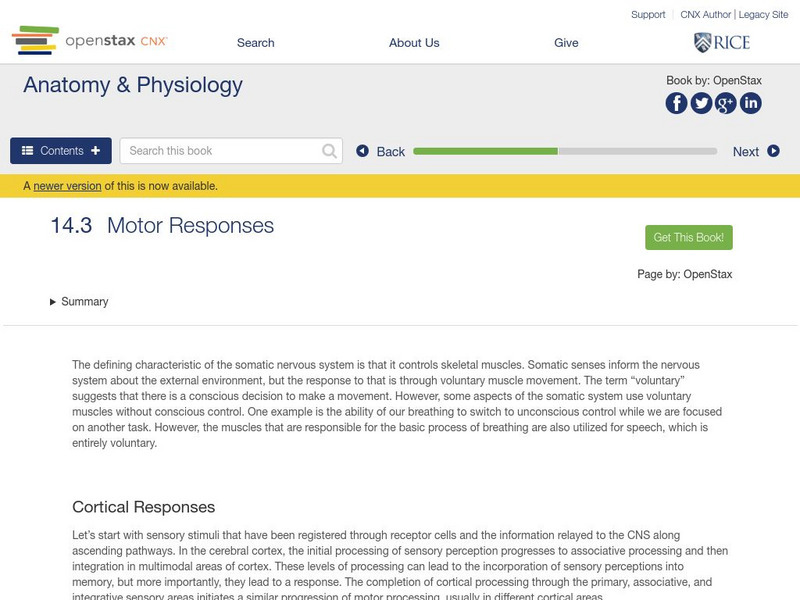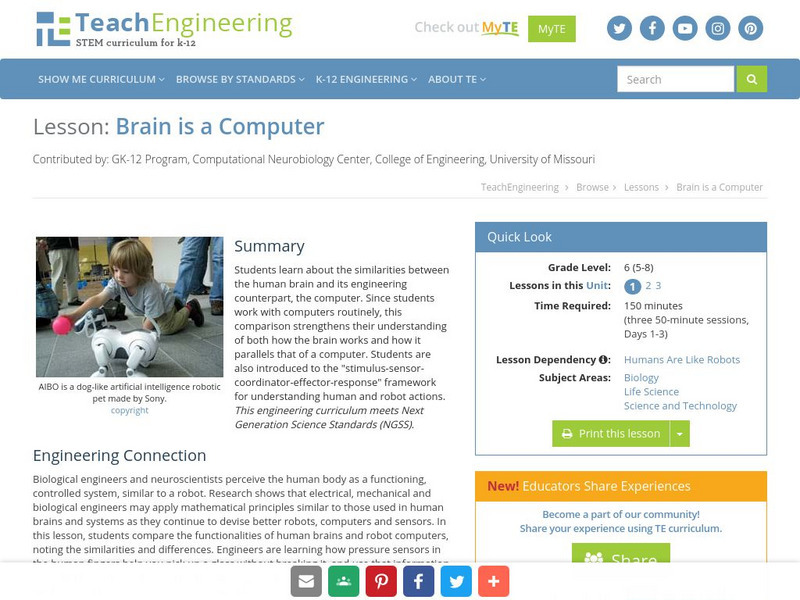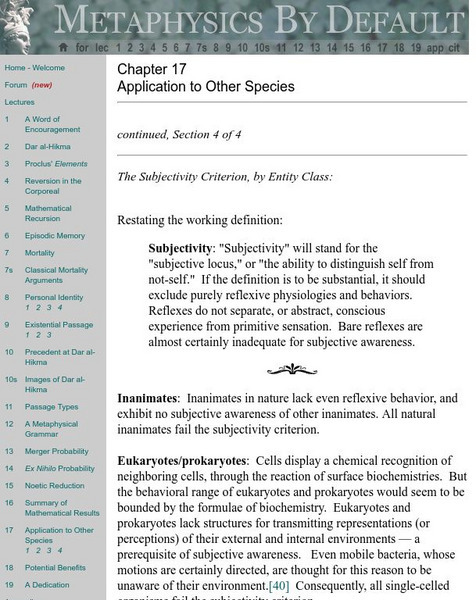Curated OER
The Nervous System
Human biology beginners label colorful diagrams of the neuron, the reflex pathway, and the brain. They list steps in the action potential process, and describe several different neurotransmitters. This worksheet guides learners through...
Curated OER
The Nervous System from A to Z
In this nervous system alphabet book worksheet, students study 26 neuroscience terms as they read the 26 terms and their definitions in the glossary. Some of the terms included are: receptor, unipolar, white matter, axon, hemisphere,...
Curated OER
Review for Strand 2A Test: Nervous System
Three pages containing 51 true and false questions make up this nervous system review. The major topics listed at the top of the test mention a film strip and a laboratory activity, but the questions appear to be answerable without...
Curated OER
The Nervous System
In this online interactive nervous system instructional activity, students respond to 11 multiple choice and fill in the blank questions regarding the information included in the provided paragraphs.
Curated OER
Coping with Changes
Students build on knowledge of brain and nervous system in order to write about how their nervous systems help them cope with change in environment. Students navigate online sites to explore different parts of brain and nervous system.
Curated OER
'Neuro-Bingo'
Young scholars discuss the nervous system and its pathology. They are then able to explain what neural physiology is. They use this game to further help them to develop clear meaning of the nervous system.
Curated OER
Response to Stimuli
Students study the process of detection, coordination and response. In this biology lesson plan, students design an experiment to test stimuli response. They participate in a game-show style quiz after the activity.
Curated OER
Reflexes
Students experiment to explain how reflexes, nerve impulses travel to the brain.
Curated OER
Inside Information
Learners explore two pathways for information through the nervous system. The pathways for involuntary action or reflex and voluntary responses are built and related to the element of choice.
Curated OER
All About the Brain
Students use eggs, cooking oil, foam balls and more to create a simulation of the brain and record what happens in each step. In this brain lesson plan, students learn about protecting the brain, the brain's ability to learn, and reflexes.
Curated OER
Co-ordination and Response - Lesson Plan
Eleventh graders explain why colour blindness is more common in men than women.
Curated OER
Ion Flow in Neurons
Student perform an experiment in which they determine the velocity of ion flow in an electrotonic potential and compare it to the velocity of action potentials. They record and analyze their results.
National Cancer Institute at the National Institutes of Health
Seer Training Modules: Introduction to the Nervous System
Self-guided learning activity where students learn about the structure and function of the human nervous system. There is a short quiz at the end of the lesson to check for understanding.
BBC
Bbc: Gcse Bitesize: The Nervous System
An animal's response to a stimulus is coordinated by its central nervous system (CNS). Neurons carry electrical impulses, and are connected by synapses. Some drugs and toxins affect how impulses pass from one neuron to the next across a...
OpenStax
Open Stax: Anatomy & Physiology: Autonomic Reflexes and Homeostasis
Looks at how to determine the effect of the autonomic nervous system on the regulation of the various organ systems on the basis of the signaling molecules involved.
PBS
Newton's Apple: Reflexes
Newton's Apple informational site on reflexes. Includes vocabulary, resources, and several hands-on activities.
Curated OER
Kids Health: What Are Reflexes?
This succinct site provides a basic explanation of what reflexes are and delves into the role of the spinal cord and nervous system in communicating and receiving messages.
OpenStax
Open Stax: Anatomy & Physiology: The Sensory and Motor Exams
Students learn the arrangement of sensory and motor regions in the spinal cord in order to understand a sensory and motor exam. They will also understand the clinical indications of common reflexes.
Exploratorium
Exploratorium: Science of Baseball: Biological Baseball
Younger students learn that hitting a baseball requires the use of various brain to body reaction activities and how those compare to the instincts and actions of animals.
Famous Scientists
Famous Scientists: Charles Sherrington
Learn about Charles Sherrington, the Nobel Prize winner in Physiology or Medicine for his work on the functions of neurons.
OpenStax
Open Stax: Anatomy & Physiology: Motor Responses
Students learn the structure and function of the descending pathways of the motor commands from the cortex to the skeletal muscles.
TeachEngineering
Teach Engineering: Brain Is a Computer
Students learn about the similarities between the human brain and its engineering counterpart, the computer. Since students work with computers routinely, this comparison strengthens their understanding of both how the brain works and...
Other
Wayne Stewart/social Insects
Discussion of insects that show awareness of others of their own species although their behavior is highly regimented and instinctive.










